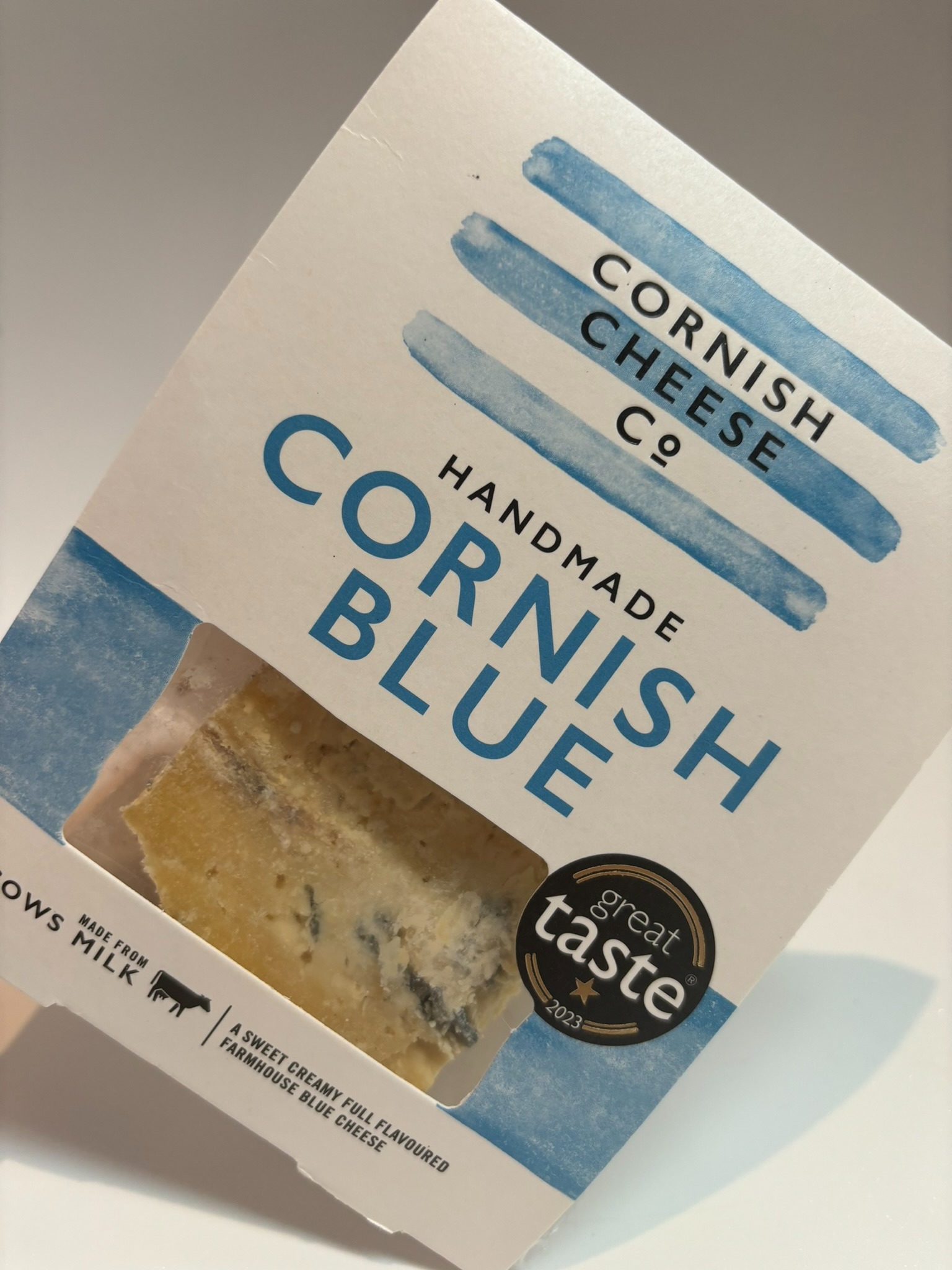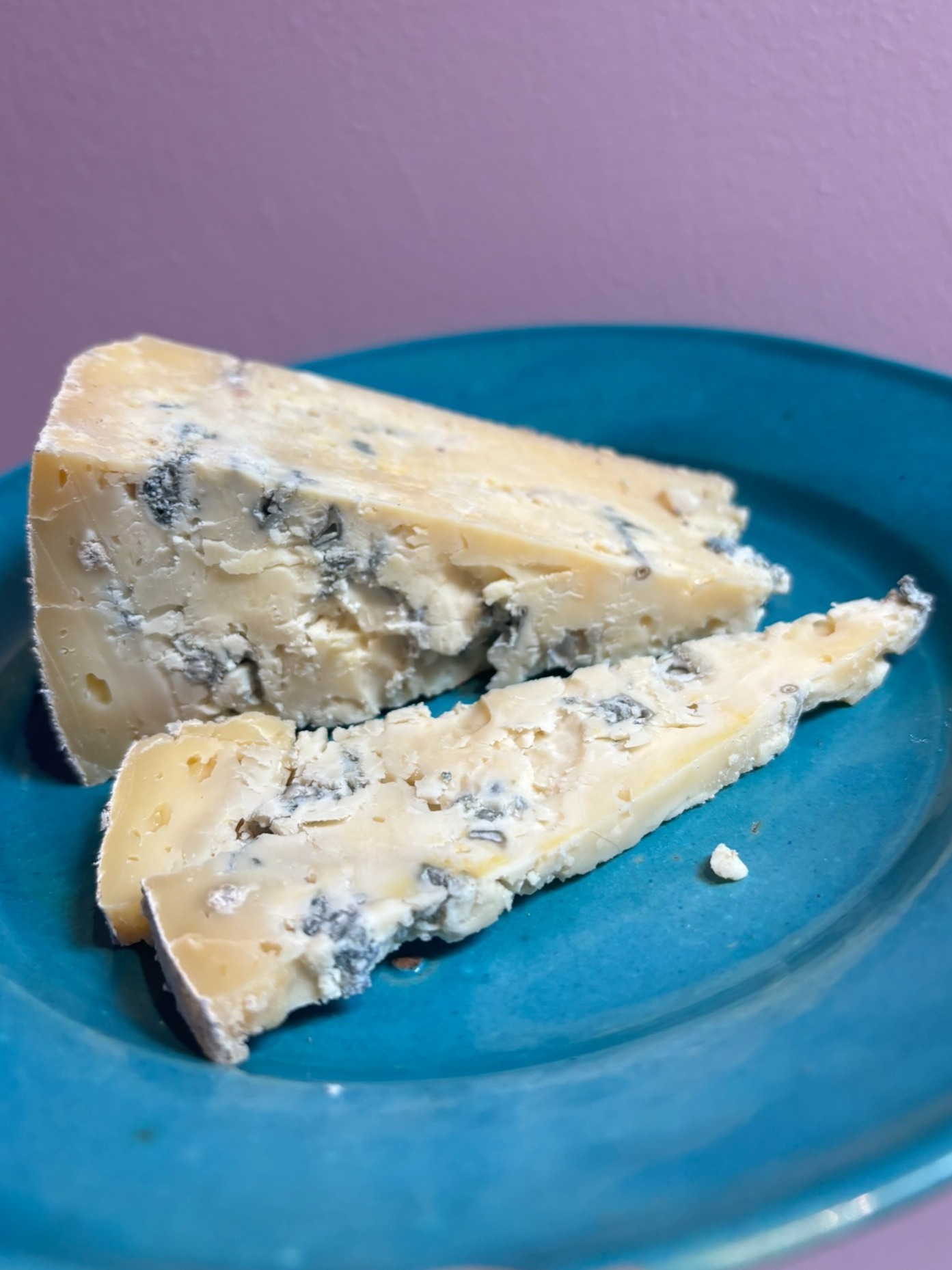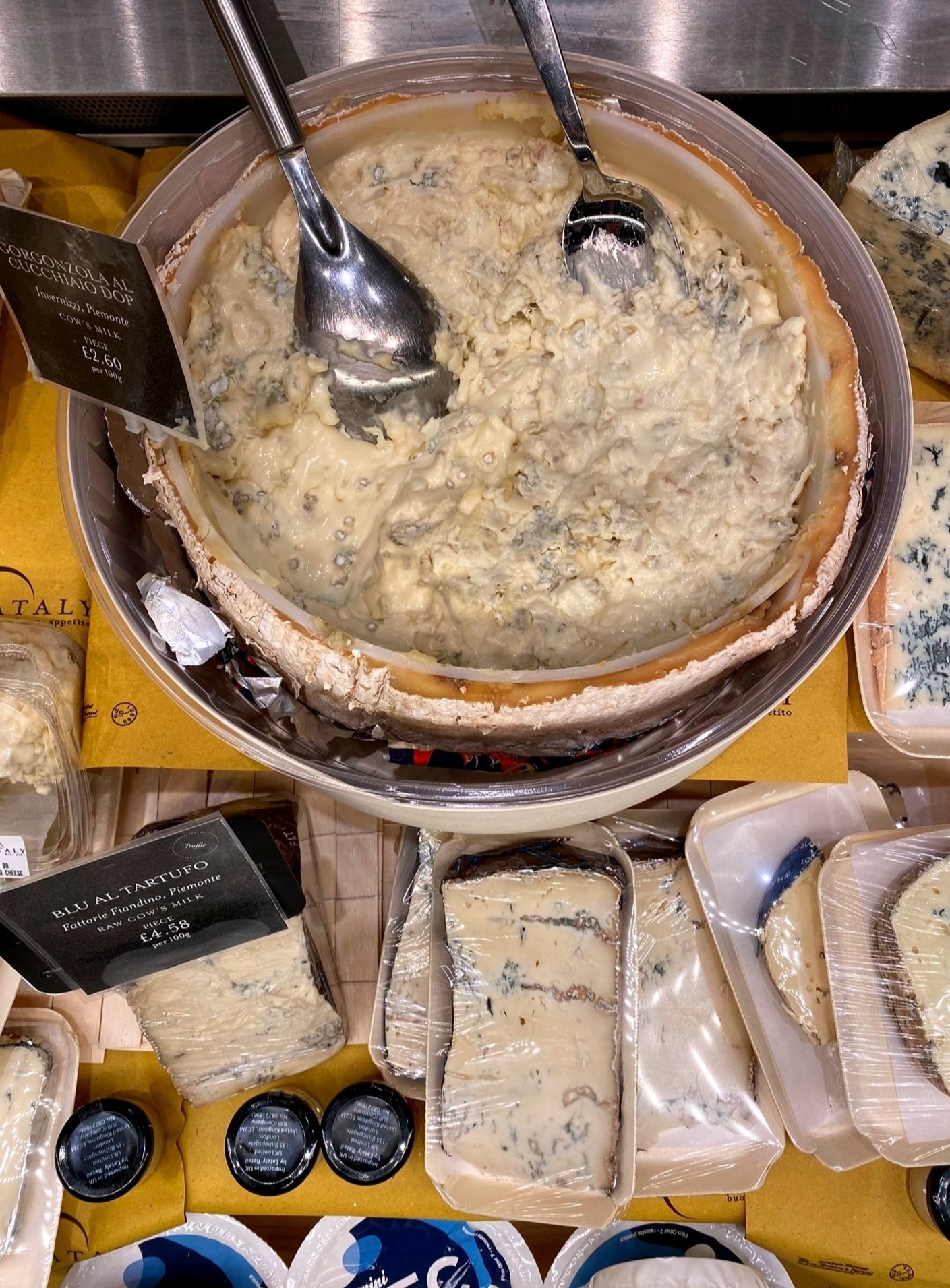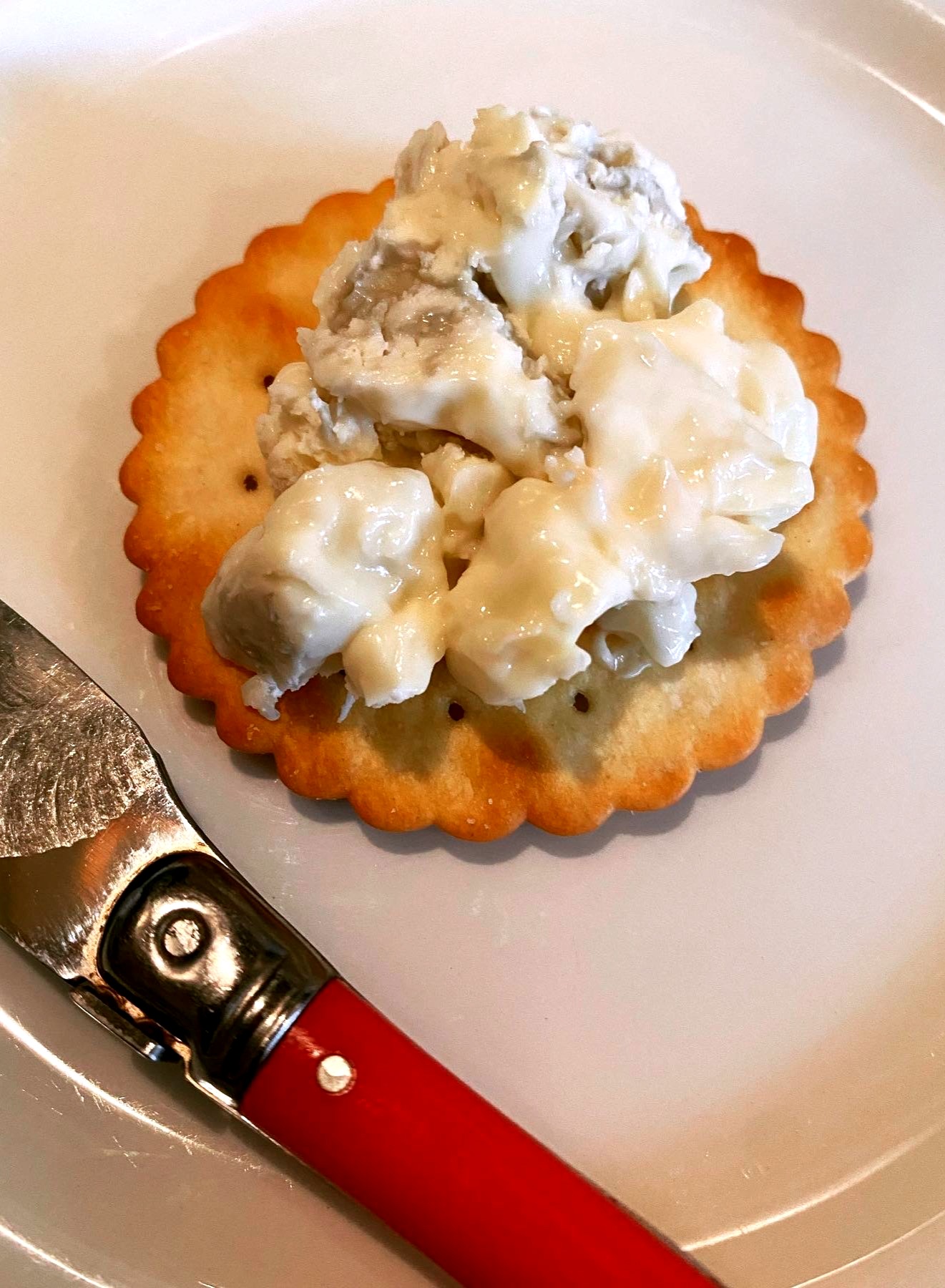

This cheese hails not from the Cornwall of sea-carved coves and vertiginous coastal paths but rather from the wilder, bleaker moors of the interior. Not the land of cream teas and Tintagel tea towels but of stark rocky bluffs, of moaning winds, of Jamaica Inn.
And there is indeed something untamed about Cornish Blue, the Millennial brainchild of the Cornish Cheese Co. It’s designed specifically to be eaten young, or so the producers say, and sees only 8-14 weeks of maturation before it hits your cheese plate. Sweet, not salty umami like Stilton, they state. Well, yes. To a degree.
It’s a young blue by most standards and so you can still get the sweet milky hum in its dense, fudgy interior. But sitting behind that is a rather complex blue tang that doffs its hat to Stichelton’s bitter, rustic, farmyardy qualities. Here, however, the crumbly cream of the paste wraps around the metallic blue notes to soften them and deliver them on the palate in a softer fashion. But there’s a definite ammonia hum to its natural rind which the exterior portion of paste inevitably picks up adding complexity and another menu of flavours.
There’s a super-long finish, too: an interplay of sweet, umami and funky blue notes – like clouds across Bodmin Moor revealing now shafts of sunlight, now a darker countenance. In the sample I tried (admittedly a supermarket offering) they didn’t marry quite as well as I had hoped. I am going to order some directly as I suspect it should be rather more successful. It was crowned World Champion at the 2010 World Cheese Awards after all, which is quite a feat for such a recently developed cheese. And with the right balance between elemental power and more domesticated hygge it would, I think, be a winner indeed.
coming soon ...
Get to know more about cheese with my full-length articles:




